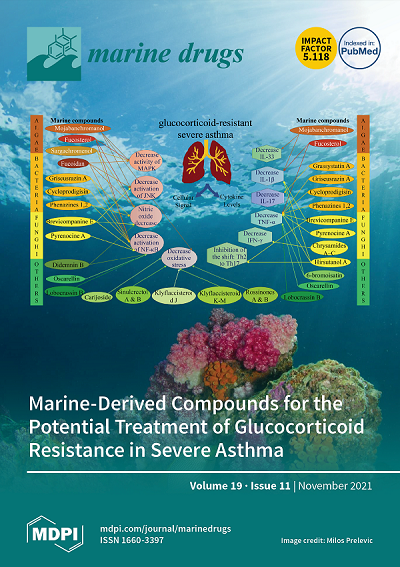调节假单胞菌 PMA22 中沙弗莱霉素的合成和转运
IF 4.9
2区 医学
Q1 CHEMISTRY, MEDICINAL
引用次数: 0
摘要
Pseudomonas poae PMA22 能产生黄樟素,这是一个具有强效广谱抗菌和抗肿瘤活性的化合物家族。黄樟素的生物合成基因簇(BGC sac)由 11 个 ORFs 组成,分别位于两个不同的操作子中(sacABCDEFGHK 和 sacIJ),由 Pa 和 Pi 启动子控制。与 BGC 囊相邻,我们找到了一个编码 LysR 家族推定全局调控因子(注释为 MexT)的基因,该基因最初被描述为假单胞菌中 MexEF-OprN 多药外排泵的转录激活因子。通过体外和体内实验,我们证明了 MexT-MexS 双重调控系统分别作为激活剂和抑制剂参与了 BGC 囊的表达。同样受 MexT 控制的 PMA22 的 MexEF-OprN 转运系统在黄霉素的代谢过程中发挥了重要作用。在 PMA22 中过表达 mexEF-oprN 可使黄霉素的生产水平提高四倍。这些结果说明,多效调控系统对于优化定制次生代谢物的生产至关重要,它不仅能与 BGC 启动子直接相互作用,还能控制次生代谢物的运输。本文章由计算机程序翻译,如有差异,请以英文原文为准。
Regulation of Safracin Biosynthesis and Transport in Pseudomonas poae PMA22
Pseudomonas poae PMA22 produces safracins, a family of compounds with potent broad-spectrum anti-bacterial and anti-tumor activities. The safracins’ biosynthetic gene cluster (BGC sac) consists of 11 ORFs organized in two divergent operons (sacABCDEFGHK and sacIJ) that are controlled by Pa and Pi promoters. Contiguous to the BGC sac, we have located a gene that encodes a putative global regulator of the LysR family annotated as MexT that was originally described as a transcriptional activator of the MexEF-OprN multidrug efflux pump in Pseudomonas. Through both in vitro and in vivo experiments, we have demonstrated the involvement of the dual regulatory system MexT-MexS on the BGC sac expression acting as an activator and a repressor, respectively. The MexEF-OprN transport system of PMA22, also controlled by MexT, was shown to play a fundamental role in the metabolism of safracin. The overexpression of mexEF-oprN in PMA22 resulted in fourfold higher production levels of safracin. These results illustrate how a pleiotropic regulatory system can be critical to optimizing the production of tailored secondary metabolites, not only through direct interaction with the BGC promoters, but also by controlling their transport.
求助全文
通过发布文献求助,成功后即可免费获取论文全文。
去求助
来源期刊

Marine Drugs
医学-医药化学
CiteScore
9.60
自引率
14.80%
发文量
671
审稿时长
1 months
期刊介绍:
Marine Drugs (ISSN 1660-3397) publishes reviews, regular research papers and short notes on the research, development and production of drugs from the sea. Our aim is to encourage scientists to publish their experimental and theoretical research in as much detail as possible, particularly synthetic procedures and characterization information for bioactive compounds. There is no restriction on the length of the experimental section.
 求助内容:
求助内容: 应助结果提醒方式:
应助结果提醒方式:


